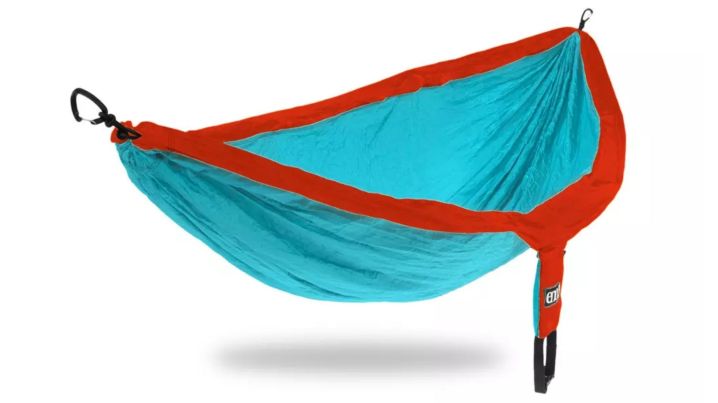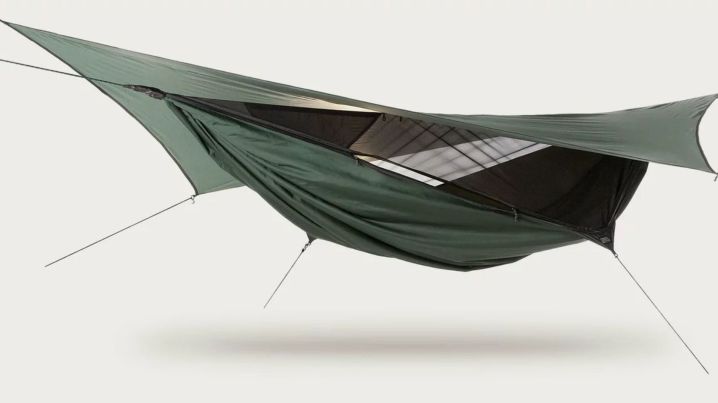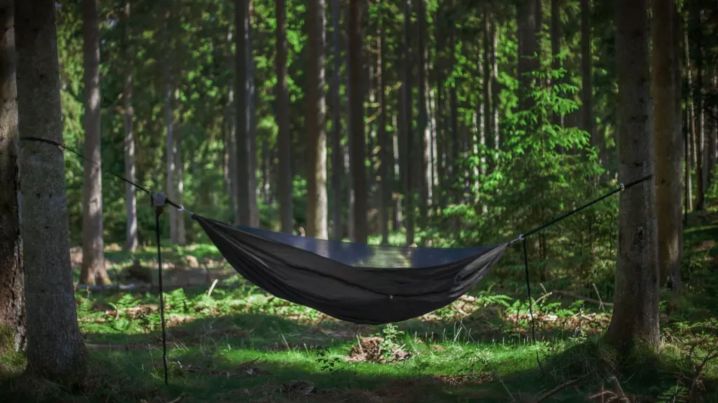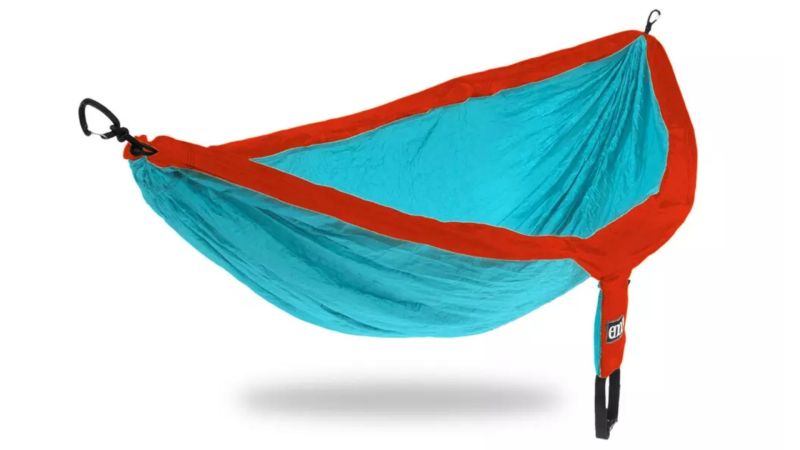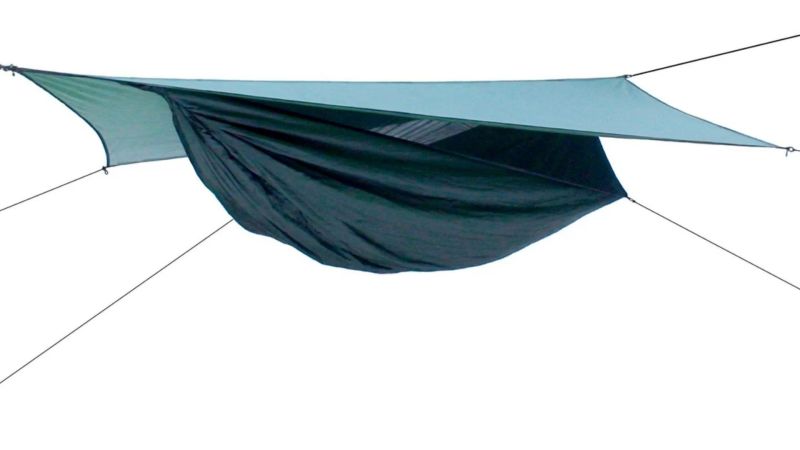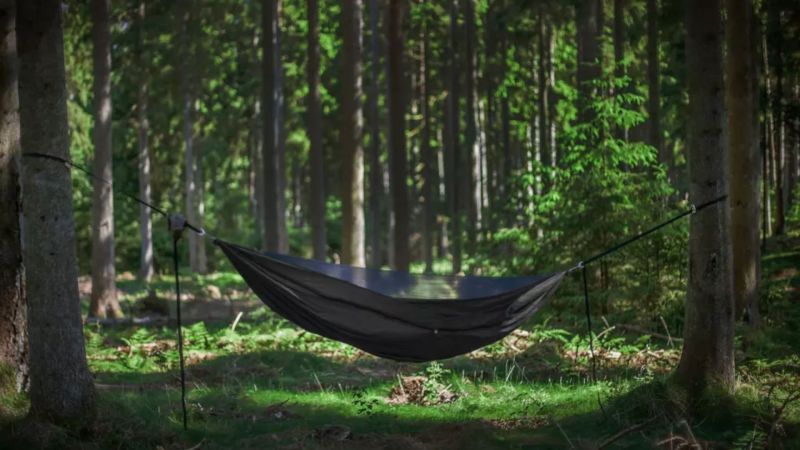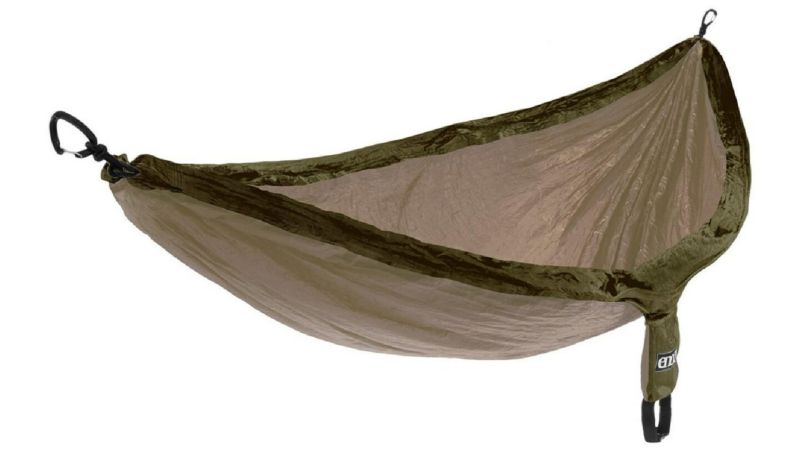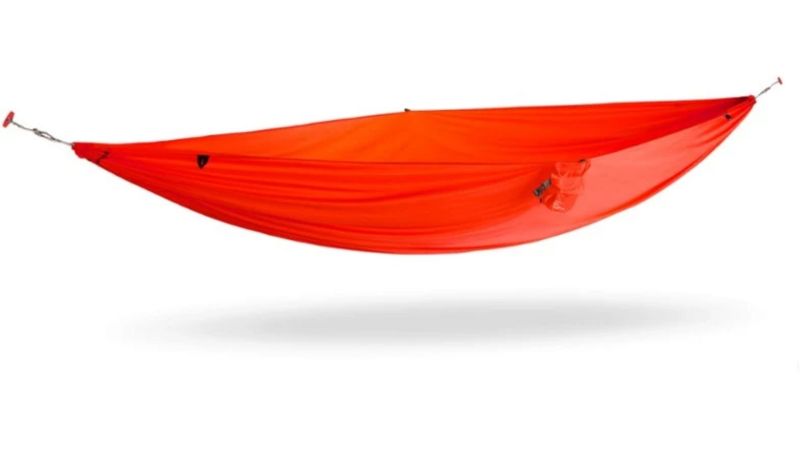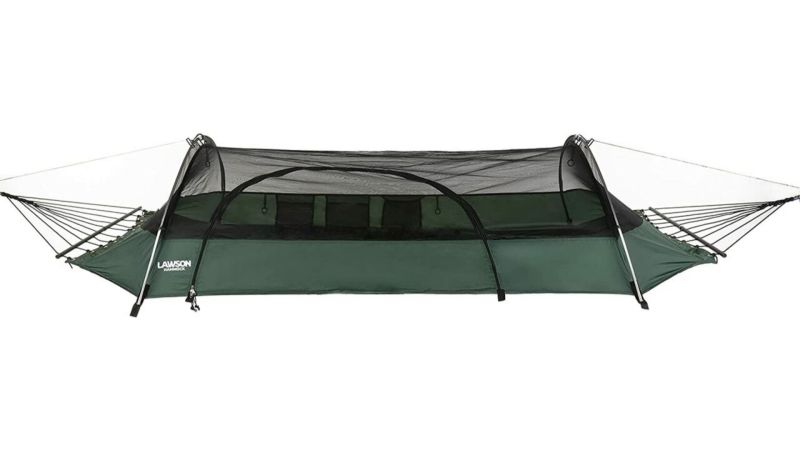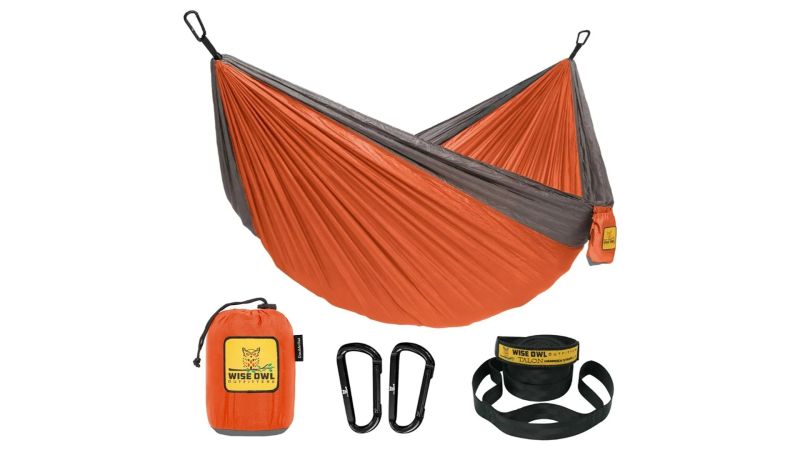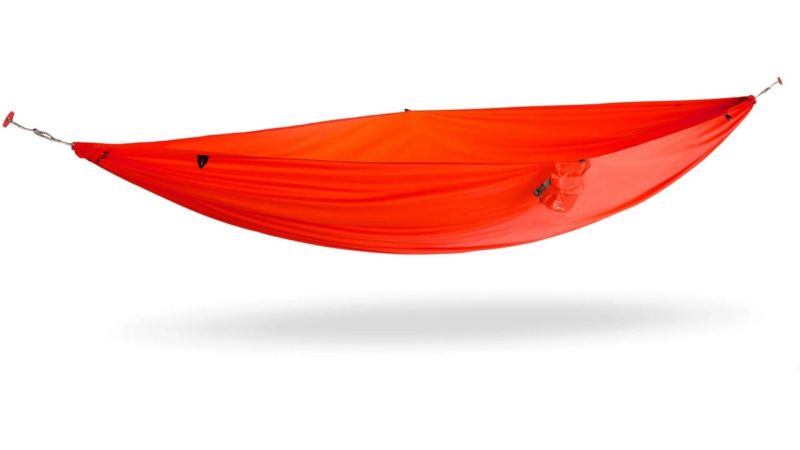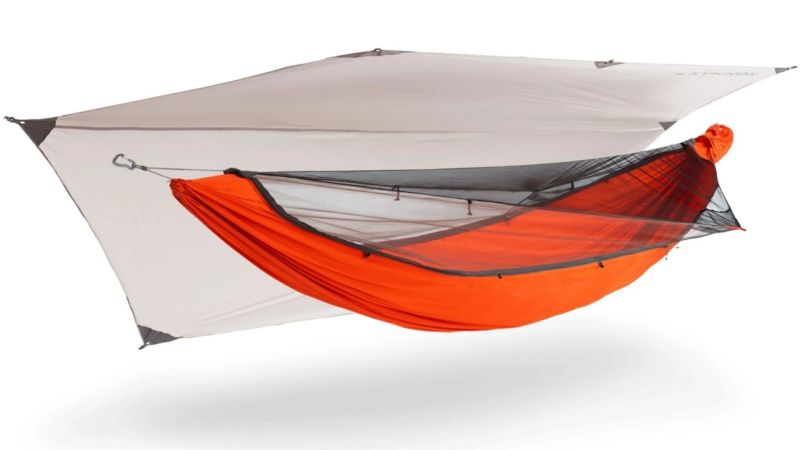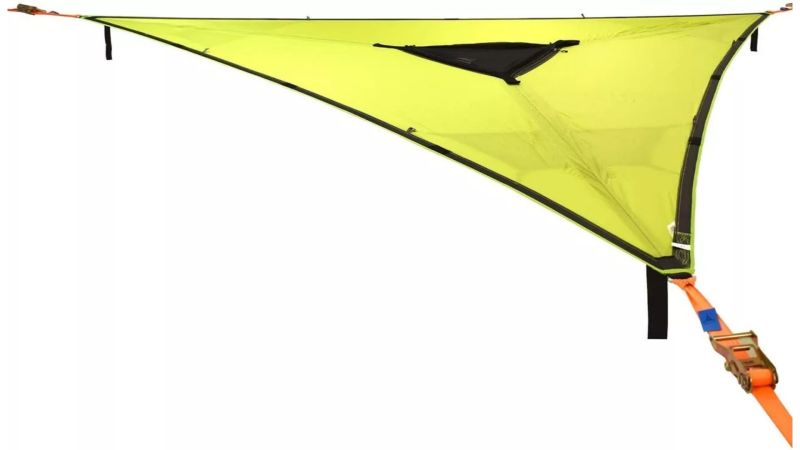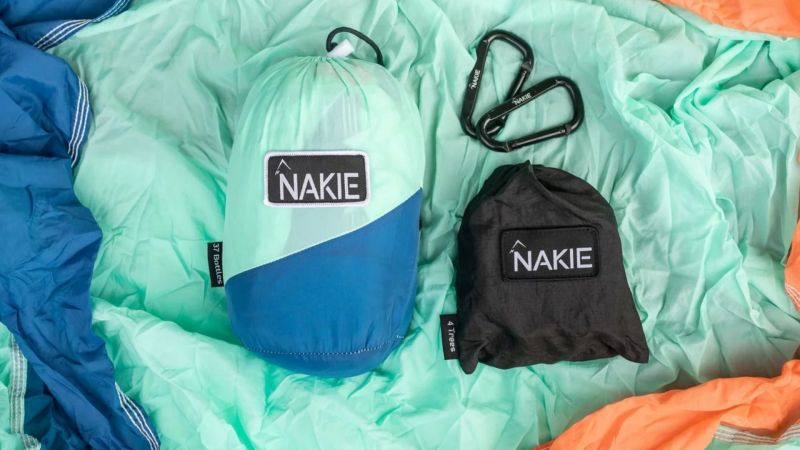We may earn revenue from the products available on this page and participate in affiliate programs.
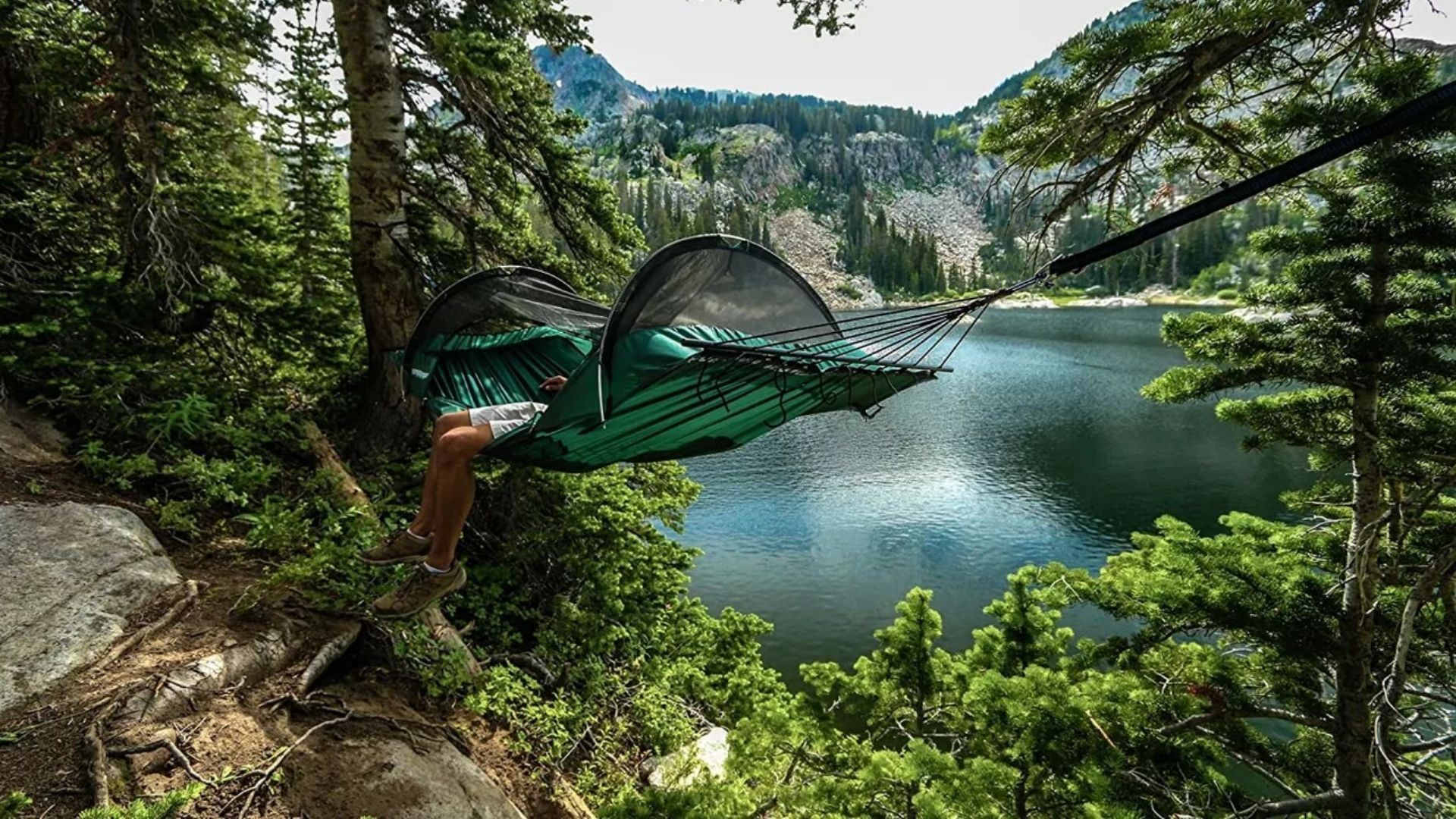
In recent years, seasoned backpackers and car campers alike have all but abandoned their tents to sleep under the stars in camping hammocks. Cocooned in soft fabric and immersed in the sweet embrace of nature, sleeping in hammocks is a great alternative to tents; even better, they’re often more affordable and lighter. For many campers, once you switch to sleeping in a hammock, you never go back.
When it comes to picking out the best camping hammocks, it can be hard to figure out where to start, with seemingly endless options on the market. To that end, we selected 11 of the best camping hammocks out there for you to pursue in your search for your next outdoor sleeping option. Whether you are looking to cut weight in your backpacking pack, protect yourself from the elements, or enjoy a luxurious night of car camping, read on for our top picks.
Best Overall
ENO DoubleNest
Best Value
Hennessy Hammock Expedition Asym Zip
Editor’s Pick
Warbonnet Original Blackbird
Best Rated Camping Hammock
ENO SingleNest
Best Ultralight Backpacking Hammock
Kammok Roo Single Ultralight Hammock
Best Hammock for Side-Sleepers
Lawson Blue Ridge Camping Hammock
Best Budget Hammock
Wise Owl Outfitters DoubleOwl Camping Hammock
Best Mosquito Net Hammock for Camping
ENO JungleNest Hammock
Best Hammock with Cover for Camping
Kammok Mantis All-In-One Hammock Tent
Best Large Camping Hammock
Tentsile Trillium Giant 3-Person Camping Hammock
Best Eco-Conscious Hammock
Nakie Recycled Hammock
Why you should trust us
I’m an avid hammock-user, whether that means lounging in my backyard in my ENO DoubleNest, or rocking under the stars next to one of the Pacific Northwest’s stunning alpine lakes. Nothing compares to sipping tea in the morning in my hammock, still snug in my sleeping bag, while gazing at mountain views. As an outdoors-lover, I pride myself on finding the best gear out there — for the most affordable price. I scour the internet for gear deals in my sleep, so when it comes to choosing the best camping hammocks, you can trust that I will lead you to the best hammock to fit your particular needs.
Types of camping hammocks
Lounging hammocks
These are your basic parachute hammocks — typically the most affordable options on the market. This includes options like the famed ENO SingleNest and DoubleNest hammocks, as well as budget options like the Wise Owl Outfitters DoubleOwl hammock.
These options are great for setting up in your backyard or the local park, and they’re light enough to throw in your pack for backpacking. Although they often don’t come with many features, you can purchase an additional bug net, rain tarp, and under- and over-quilts to use these hammocks all four seasons.
Ultralight hammocks
These hammocks are the best options for avid backpackers looking to cut out that heavy tent with an ultralight option. Hammocks like the Kammok Roo Single Ultralight Hammock weigh less than an apple and cut out heavy items like carbineers. These may not be the warmest options, so if you are going out in cold weather, make sure to invest in quilts or rain tarps to shield yourself from wind and weather. These hammocks are generally cheap compared to options with more features.
Tent hammocks
If you are camping in hammocks for all four seasons, tent-like hammocks will be your best bet, providing shelter from the elements. Options like the Hennessy Hammock Expedition Asym Zip and the Kammok Mantis All-In-One Hammock Tent come with built-in rain tarps and bug nets, as well as suspension systems.
Other options like the Lawson Blue Ridge Camping Hammock leave behind the banana-like hammock shape altogether and suspend a flat frame, which doubles as a tent bivy that can be staked to the ground. These options are typically more expensive and not great for lounging and sitting up, so make sure you definitely require these additional features.
Key features of camping hammocks
Comfort
Sleeping in hammocks is definitely not for everyone, and users can find different hammocks more comfortable depending on how they sleep. The traditional banana-like hammocks tend to be more comfortable for back-sleepers — especially if you put a sleeping pad in it for more back support.
Hammocks made for two, or ones with an asymmetric or flat, modular design, tend to be the best for side-sleepers. These include options like the Hennessy Hammock Expedition Asym Zip and the Lawson Blue Ridge Camping Hammock. These options can be pricier, but it may be worth the few extra bucks to ensure a good night’s sleep.
Accessories
Depending on the hammock, you may need to buy a suspension system separately. Popular models include the ENO Atlas Hammock Suspension System ($29.95) or the Kammok Python 10 Hammock Straps ($29), both of which are extremely adjustable and easy to set up.
When camping in cold weather, you may also want to invest in a rainfly, if your hammock doesn’t include one. Many hammock-users also swear by insulated underquilts, a blanket that attaches under the hammock to keep you from losing heat.
For these accessories, it’s often best to buy items specifically designed to be compatible with your hammock. If you don’t want to invest in an underquilt, putting a sleeping pad in your hammock can help keep you warm and give the hammock more shape for sleeping.
Weight
Generally, the more features a hammock has, the heavier it is. This means the hammocks including rain tarps and bug nets tend to weigh a bit more — but if you are headed into the backcountry, that may be necessary, and they’re often still lighter than a tent.
Weight only really matters if you intend to sleep in your hammock while backpacking. If this is the case, you may want to look towards ultralight options like the Kammok Roo Single Ultralight Hammock. But, if you are looking to car camp or lounge around town, this is not as important of a consideration, and you may want to look towards cheaper options, or ones with more features.
Benefits of camping hammocks
Lightweight alternative
Compared to most tents, hammocks are lightweight and compact. They are easy to throw in your pack when backpacking or keep in the car for all your spontaneous hammocking needs. Some hammocks weigh in at less than a pound, so for those looking to cut down pounds in their pack, this is a great option.
Camping flexibility
One of the most tedious parts of camping is often finding a site suitable for a tent. Hammocking is a great way to skip the struggle of sleeping on rocky, uneven ground. It also can allow for more people to sleep in one site, with some people in tents and others in hammocks.
On the flip side, sleeping in hammocks requires stable trees. Do some research before heading out camping to see if the trees will suffice. Get to know the distance between trees needed to comfortably hang your hammock and keep an eye out for this while backpacking.
Ease of use
While setting up a tent can be complicated and require multiple people, putting up a hammock often takes mere seconds — especially if you invest in one of the simpler parachute hammocks. The process typically entails wrapping straps around two trees and attaching them to both ends of the hammock.
The options with rainflies or bug nets can be a bit more time-consuming, so make sure to practice setting these up near home before venturing into the backcountry.
Camping hammock pricing considerations
Budget
The cheapest hammocks typically cost between $25 and $75. This includes the ENO SingleNest ($37.39) and DoubleNest ($69.95) hammocks, as well as the Wise Owl Outfitters DoubleOwl ($28.85) hammock and the Nakie Recycled Hammock ($71.20). These options are lightweight and include minimal features.
Mid-range
These hammocks vary from $75 to $160. The Kammok Roo Single Ultralight Hammock ($89), the Hennessy Hammock Expedition Asym Zip ($159.95) and the Warbonnet Original Blackbird ($155) fit into this category, along with the Kammok Mantis All-In-One Hammock Tent ($155.35) and the ENO JungleNest Hammock ($109.95). These hammocks typically have more features, like a rainfly and bug net.
Premium
These upscale hammocks are over $160. This includes the Tentsile Trillium Giant 3-Person Camping Hammock ($314) and the Lawson Blue Ridge Camping Hammock ($181.30). These options have special features and can be more involved to set up.
How we chose our top picks
When choosing our favorite hammocks, we considered which product excels in each category, looking at features such as weight, comfort, and accessories. We identified products that fit the needs of backpackers, considering weight and cold weather adaptability, along with products that may be more comfortable for car camping. While I have personally tested ENO hammocks, I looked towards product reviews and other experts to identify my other top picks. I made sure to look at several sources for each product, including GearLab, GearJunkie, CleverHiker, and REI, among others.
FAQs on camping hammocks
You’ve got questions, Task & Purpose has answers.
Q: Are hammocks good for side-sleepers?
A: Yes, hammocks can be just as good for side-sleepers as they are for those that sleep on their backs. Consider sleeping at a diagonal and give your hammock 30 degrees of slack at each end, or get a hammock with a flat, fixed frame.
Q: How do I choose a hammock?
A: Before picking out a hammock, first identify what features matter to you and what you will be using the hammock for, whether that be backpacking, car camping, or lounging in a park — and then go from there.
Q: Are hammocks bad for your back?
A: As long as you set your hammock up right, sleeping this way can actually provide more support for your back than sleeping in a bed, where you toss and turn throughout the night.
Our gear section
Hanna Merzbach is a journalist living in Bend, Oregon. She writes everything from breaking news and magazine features to outdoor gear reviews. Her writing on housing and homelessness and the uneven impacts of climate change has appeared in The Atlantic, High Country News, and Mother Jones. She has also done reporting stints with Lookout Santa Cruz and Portland’s NBC affiliate, KGW. In her free time, you can find her scaling rock walls or backpacking in the mountains.
